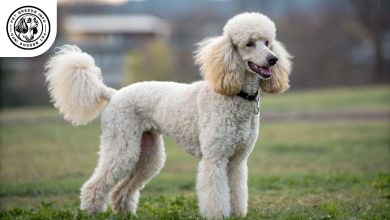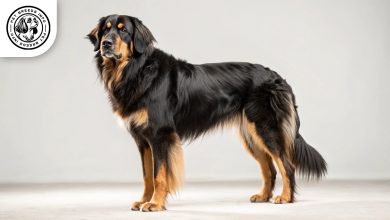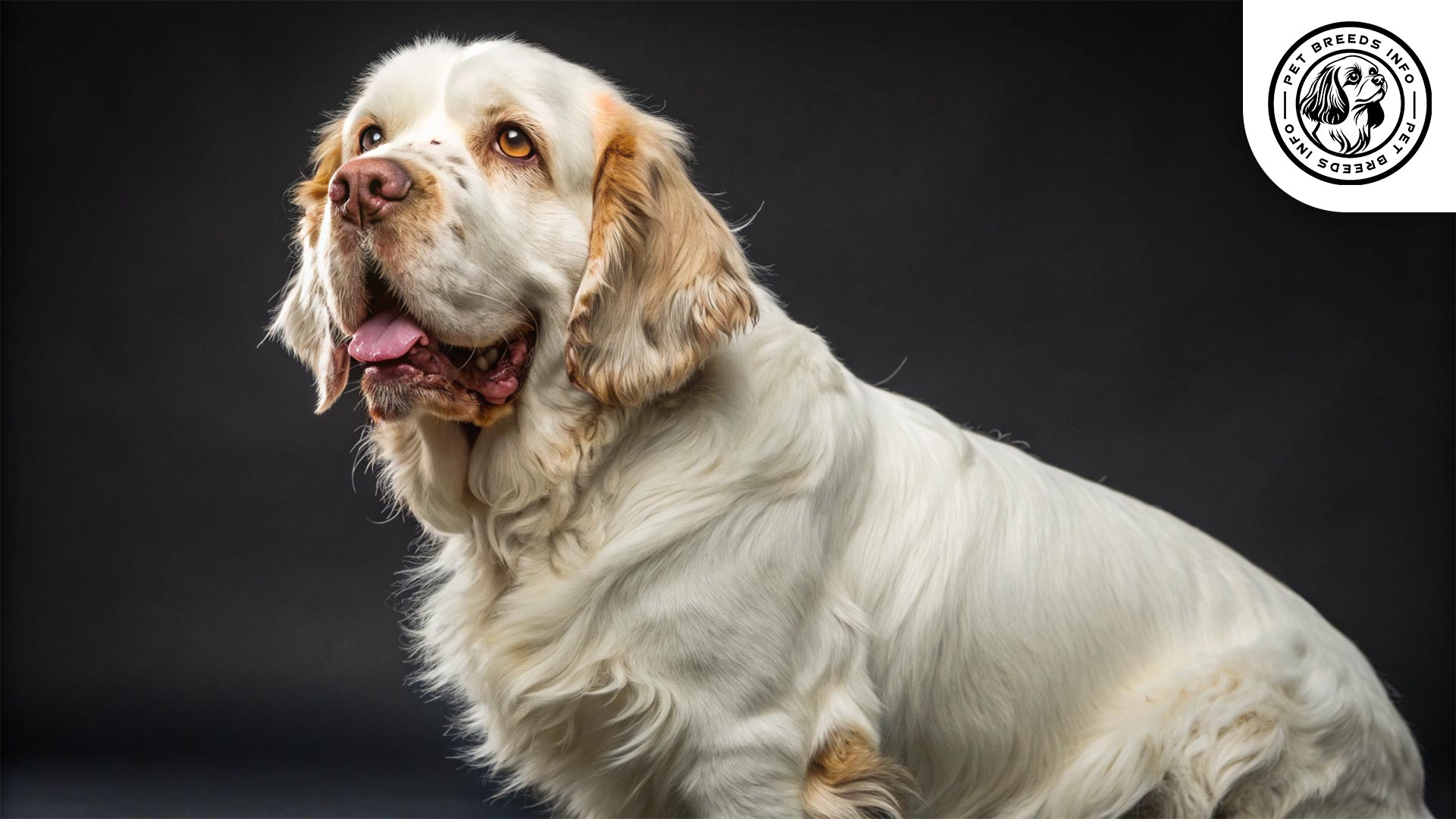Alaskan Malamute Dog Breed: Size, Price & Personality
General Introduction of the Breed
The Alaskan Malamute is a powerful and dignified Arctic breed known for its strength and endurance. In English, it is commonly referred to as “Alaskan Malamute,” while its name remains the same in most other languages.
Alternative names are not widely recognized, but this breed is sometimes confused with the Siberian Husky.
Originating from Alaska, USA, this breed was developed by the native Inuit tribe known as the Mahlemut people. It was primarily used as a sled dog for transporting heavy loads across harsh Arctic terrain.
Table of Contents
| Weight | 70-100 lbs |
| Lifespan | 10-14 years |
| Diet | High-protein diet, dry/wet/raw food |
| Care | Heavy shedding, frequent brushing needed |
| Health | Prone to hip dysplasia, bloat, thyroid issues |
| Color | Black, gray, sable, red with white |
| Nature | Loyal, independent, energetic |
| Price | $1,200 – $3,000 |
Physical Characteristics
Male Alaskan Malamutes stand between 24 to 26 inches tall and weigh between 85 to 100 pounds. Females are slightly smaller, growing to about 22 to 24 inches in height and weighing between 70 to 85 pounds.
The breed has a dense double coat that is well-suited for cold climates. Coat colors include combinations of black, gray, sable, and red, with white markings on the face, chest, and legs.
They have almond-shaped brown eyes that give them a wise and friendly expression.
Their ears are medium-sized, triangular, and set high on the head, while the tail is bushy and carried over the back in a gentle curve.
Distinctive features include their large, well-padded paws, which help them walk efficiently on snow.
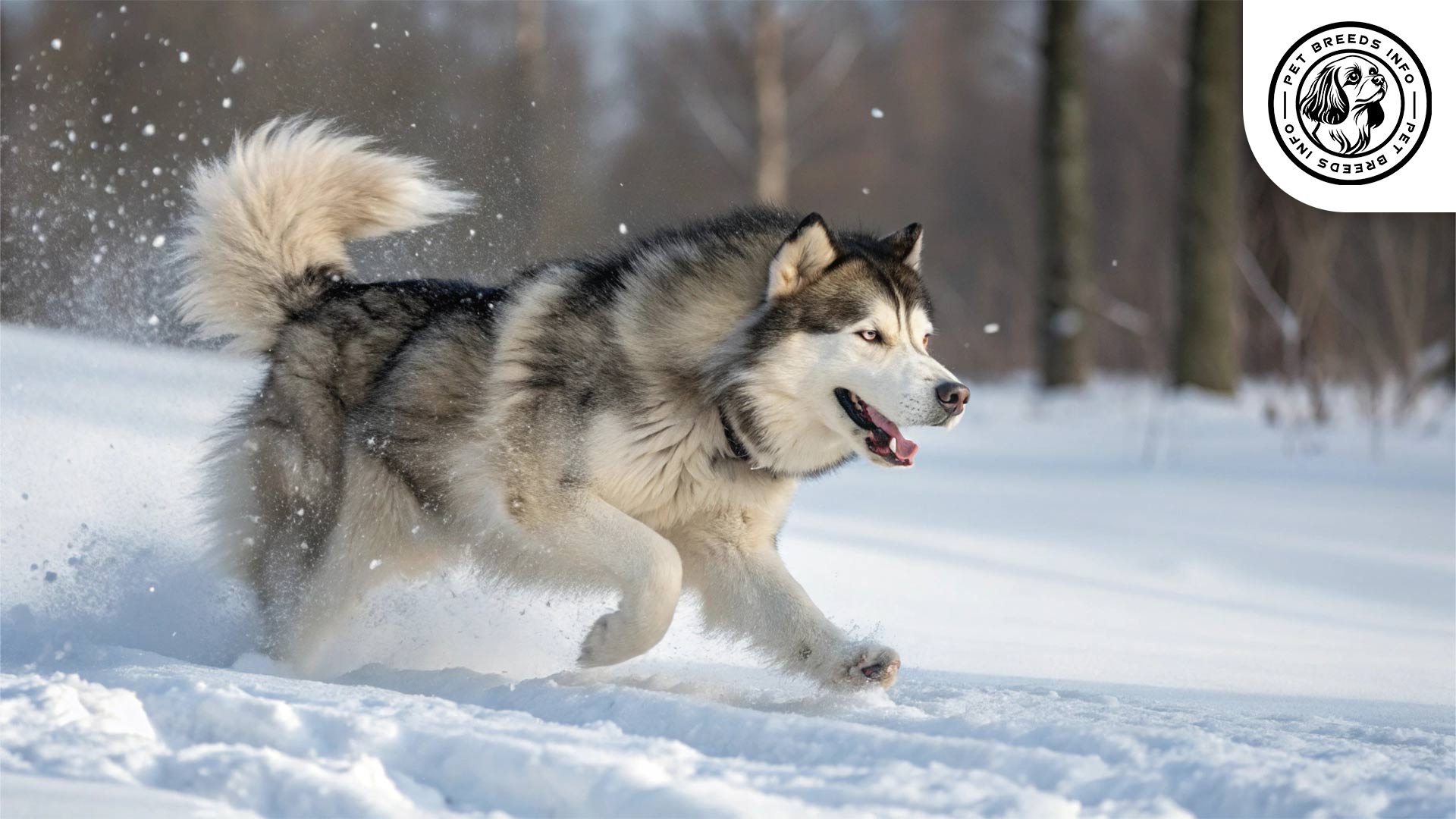
Personality and Temperament
The Alaskan Malamute is highly intelligent but has an independent and sometimes stubborn nature, requiring consistent training.
It is a high-energy breed that needs plenty of physical activity and mental stimulation.
This breed is affectionate and forms strong bonds with its family members but is not overly clingy.
Malamutes are generally friendly and sociable with humans, including children. However, they require socialization to get along well with other pets.
They have a strong prey drive, which may make them unsuitable for households with smaller animals.
Malamutes are highly sensitive to environmental changes and can struggle in hot climates due to their thick coat.
Care and Maintenance Requirements
Daily exercise is essential, including long walks, hikes, or sled-pulling activities.
They are best suited for homes with large yards, as they require ample space to move around.
Their double coat sheds heavily, especially during seasonal changes, requiring frequent brushing (at least 2-3 times per week).
Malamutes thrive in cold environments but can struggle in hot weather. Owners should ensure they have access to shade and water in warmer climates.
Regular hygiene care, including bathing every few months, nail trimming, and ear cleaning, is necessary. Dental care should also be a priority.
Diet and Nutrition
A high-protein diet with quality dry, wet, or raw food options works best for this breed.
Malamutes require a well-balanced diet rich in protein, fats, and essential nutrients to maintain their energy levels.
Foods to avoid include chocolate, onions, garlic, grapes, and cooked bones.
Read More: Akbash Dog
Adult Malamutes should be fed twice a day, while puppies may require more frequent meals in smaller portions.
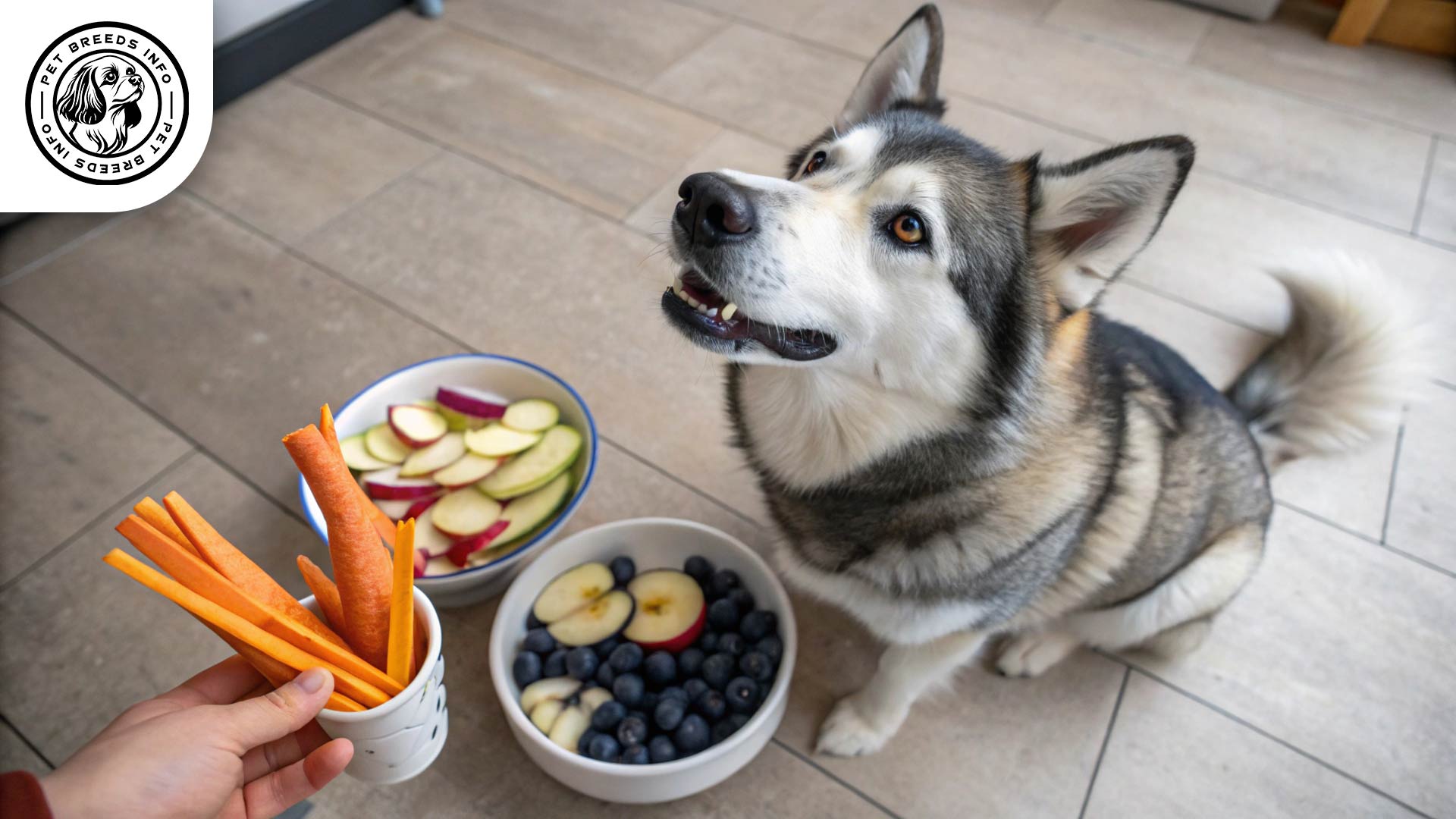
Health and Common Medical Issues
Common health concerns include hip dysplasia, elbow dysplasia, hypothyroidism, and cataracts.
They are prone to bloat (gastric torsion) and require careful feeding habits to minimize risks.
The average lifespan of an Alaskan Malamute is around 10 to 14 years.
Routine vet check-ups, vaccinations, and parasite prevention are necessary for maintaining good health.
Training and Behavior Management
Malamutes are intelligent but can be strong-willed, requiring patient and consistent training.
Owners should focus on early obedience training and socialization to ensure good behavior.
Positive reinforcement methods, such as treats and praise, work best for this breed.
Basic commands such as sit, stay, and recall should be taught early to establish leadership.
Read More: Akita Dog
Interaction with Other Animals and Humans
Malamutes are affectionate and generally good with children but require supervision due to their size and strength.
They may not get along well with small animals due to their hunting instincts.
The breed is ideal for active families rather than first-time dog owners or apartment dwellers.
Although independent, they enjoy companionship and should not be left alone for extended periods.

Price and Availability
The cost of an Alaskan Malamute puppy typically ranges between $1,200 to $3,000, depending on the breeder and pedigree.
It is important to adopt from reputable breeders who perform health screenings.
Potential owners may also consider shelters or adoption centers to provide a home to a Malamute in need.
Conclusion and Final Thoughts
The Alaskan Malamute is best suited for experienced dog owners who can meet its exercise and training needs.
This breed thrives in active households with enough space to roam and play.
Prospective owners should consider the breed’s strong-willed nature, high-energy levels, and grooming needs before adopting.
Read More: Afghan Hound Dog
With proper care, training, and attention, the Alaskan Malamute makes a loyal and loving companion.
FAQ
Do Malamutes get along with other pets?
They have a strong prey drive and may not be ideal for homes with small pets. Early socialization helps improve their tolerance of other animals.
How much exercise does an Alaskan Malamute need?
They require intense daily exercise, including long walks, hikes, or sled-pulling activities, to stay happy and healthy.
Do Alaskan Malamutes shed a lot?
Yes, they shed heavily, especially during seasonal changes. Frequent brushing (2-3 times per week) is essential for coat maintenance.
Are Alaskan Malamutes easy to train?
They are intelligent but independent, requiring firm, consistent training with positive reinforcement from experienced owners.

